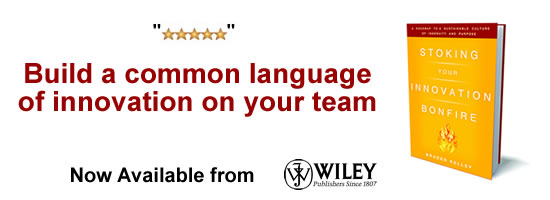Hansei: The Art of Reflection

What Did You Learn From 2017?
Around the end of the year, most of us, and our businesses, tend to slow down just a bit from the normal dawn-to-dusk mad dash. We smile a bit more. We wave people in before us in traffic, and let others with less in their shopping carts go first in the grocery store. And we often look back over the year. In other words, we reflect.
But here’s the thing: most of us don’t engage in reflection often enough, or consider it a tool worthy enough to use regularly. Generally we do a light post-mortem when we fail at something, but too often the goal is simple fault-finding, not deeper learning. And if it’s a case of an unexpected win, mostly we fist bump, high five, slap backs, pop champagne, or some other celebratory dance. There’s nothing wrong with that, as long as we acknowledge there is no real learning in that, because whether we miss a mark under or over, there’s a gap there that demands better understanding.
IF we want to get better, that is.
At this point you might be scratching your head. Allow me to explain.
Introducing Hansei
When I was working with Toyota, I learned the art of hansei (pronounced hahn-say). Hansei is the Japanese word for reflection, but its meaning is closer to introspection. Hansei finds its roots in Eastern philosophy and religion, but it is a profound skill to be mastered. Japanese school children are taught from kindergarten how to perform hansei, and it is a vital part of learning and improving.
The key insight is this: Hansei is performed regularly, as a discipline, irrespective of performance or outcome.
In other words, whether you got an A or a C on your report card, you conduct hansei to better understand the process that lead to the specific result. It’s universal that if you expected an A and got a C, you want to understand why so you bring your grade up. Here’s the hansei difference though: If you got an A but expected a B, that’s a gap worth understanding better. Contrast that to our Western culture, where we would usually just celebrate the unexpected A.
Likewise, hansei in business is a rigorous review conducted after execution of any action, and an important part of personal leadership. It is not about confirmation. It’s a sobering reality check, regardless of a project’s outcome. Were you to attend a hansei meeting following a resounding success at Toyota, you might be shocked a the tone of the meeting: it’s more stern and serious than joyful and celebratory. Yes, the team greatly exceeded expectations. But guess what, that means they didn’t understand their process. Their objectives should have been met. And even if they matched perfectly to the target, the team must still examine the course of action and the interim measures, not just the final outcome.
It took me a while to get used to that, but I came to understand that the high levels of achievement are often centered on mining the little gaps — good and bad — and that done right, the fruit of hansei is new insights which can be used to improve performance, course-correct, set new goals, craft new strategies, and plot new directions. (Still, I admit that I often wished there was a touch more rejoice, not only of great wins but also of spectacular fails.)
The late Peter Drucker suggested a practical reflection method which amounts to a daily routine of recording in a personal journal your key decisions and actions, along with a projection of the expected outcome. You then review your performance and satisfaction, feeding back from outcomes to expectations. He suggested getting additional input from a superior, peer or subordinate.
Over time, trends and patterns appear, revealing often surprising insights about our strengths and weaknesses. Drucker wrote, “I have been doing this for some fifteen to twenty years now. And every time I do it I am surprised. And so is everyone who has ever done this.â€
A Simple Routine
I have a simple hansei regimen that I look forward to (most days), one which has definitely yielded some surprises, in the form of both good and not-so-good (okay, truly lousy) ideas.
Here’s what to do:
- Make time. Try to set aside at least 15 minutes per day to begin with. But don’t be limited either way…if you only have 5 minutes, use it. This first step, as in any journey, is of course the hardest part. Blaise Pascal once wrote, “All of humanity’s problems stem from man being unable to sit quietly in a room alone.†A fairly recent study lends support to his assertion: it appears many people would rather do anything other than spend 15 minutes in a room alone diving into their thoughts…including receiving mild electric shocks!
- Review experience. I like to use the U.S. Army After Action Review technique of answering three simple questions as they relate to your day: a. What was supposed to happen; or, what did you think would happen? b. What actually happened? c. What accounts for any differences or gaps between what you thought or expected to happen and what actually happened?
- Spot trends. As time progresses (and after you’ve done this for a while), note any recurring themes, and write down or draw any potential connections among seemingly unconnected things.
- Riff and project. Think of a few “what if†ideas that come to mind based on the first three steps. Jot down opportunities to test out those new ideas. Take your “what ifs†and turn them into “if-then†hypotheses: what do you think will happen if you do (X)? Make some quick notes — to do’s, not-to-do’s, etc. — that will initiate your thoughts and provide some preliminary direction.
Although hansei is a solitary exercise meant to help you improve your performance and creativity by getting your thoughts and actions better aligned by making them more visible to yourself, the results can certainly be shared with others as you wish, and as appropriate.
I find that it helps if you don’t view reflection as a chore or strictly linear writing exercise, but rather a more freeform, self-exploratory, creative mindfulness activity.
As the first quarter of 2018 winds down, use the art of hansei to surprise yourself!
Wait! Before you go…
Choose how you want the latest innovation content delivered to you:
- Daily — RSS Feed — Email — Twitter — Facebook — Linkedin Today
- Weekly — Email Newsletter — Free Magazine — Linkedin Group
 Matthew E. May is the author, most recently, of Winning the Brain Game: Fixing the 7 Fatal Flaws of Thinking.
Matthew E. May is the author, most recently, of Winning the Brain Game: Fixing the 7 Fatal Flaws of Thinking.
NEVER MISS ANOTHER NEWSLETTER!
LATEST BLOGS
The Importance of Packaging
Let’s talk about packaging. Packaging can be thought about in many different ways, but if we think purely about the purpose of packaging first, we find the purpose is to: contain the product, communicate product information, …
Read MoreWhy the World Cup is a Big Deal
After living overseas in Germany and England and now coming back to the United States, I have a completely different perspective on Football (or Soccer as we call it in the United States). With the World Cup in full swing, I thought I would tackle the subject of Football and why it is the most popular sport in the world.
Read More


